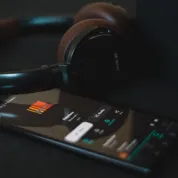
Long gone are the days of relying on radio plays and the distribution of physical albums. With over 365 million active users, Spotify is not just an option; it's a necessity. Musicians producing original music must have a presence on this platform to increase engagement, and to get paid. We'll walk you through a couple different ways for you to know how to put music on Spotify, and the essential steps to boost exposure by getting on playlists, and finally, to the financial details of streaming revenue.
Using a Distributor to Get on Spotify
Distributors are essential intermediaries that help artists put music on Spotify. Unlike traditional record labels, modern distributors offer a more streamlined and flexible approach. They are generally the preferred method for getting your music on Spotify because they handle the technical aspects, leaving you more time to focus on your music. They'll also place your music on other platforms as well, so you don't have to worry about managing each one. The steps to use a distributor can vary depending on which one you use, and we go into more depth in the following section. But in general, to get your tracks on Spotify using a distributor you'd need to do the following:
Step 1: Pick Your Distributor
First thing's first, pick a distributor that vibes with you. TuneCore, DistroKid, and CD Baby are all big names, and each has its pros and cons. TuneCore is awesome for international reach, while DistroKid is pretty budget-friendly. CD Baby has been around the block and offers a ton of services. If you're not sure which to choose, we go into more detail about the top 3 distributors in the next section.
Step 2: Get Your Music Ready
Before you hit 'upload', make sure your metadata is on point. That means your song name, artist name, and other details are correct. A typo can seriously screw things up.
Step 3: Upload Your Music
Once you're set, upload your music to your chosen distributor. They handle all the techie stuff like formatting and making sure Spotify actually gets your track.
Step 4: Double-Check Extra Costs
Be careful of hidden fees. DistroKid charges extra for some stuff like getting your song on Shazam. TuneCore might offer additional features but at a cost. Know what you're getting into.
Step 5: Look at the Release Time
How quick do you want your music up? TuneCore says 24 hours but count on a couple of days. DistroKid usually takes 2-5 days for Spotify. Better safe than sorry, so plan ahead.
Step 6: Money Matters
Make sure you know how the distributor handles your money. DistroKid lets you keep all your earnings, but they charge an annual fee. TuneCore offers a one-time cost, but you might get hit with hidden fees.
Step 7: Don't Forget Analytics
Sure, these distributors will get your music on Spotify, but don't expect detailed analytics from them. You're pretty much on your own there.
Step 8: What About New Platforms?
If some cool new music platform pops up, TuneCore adds you automatically, but DistroKid will charge extra. Keep an eye out for that.
Bonus Tips:
- Don't rely on your distributor for publishing. That's your job. And it's not as tough as it sounds.
- Keep in mind that issues like bad artwork or metadata mistakes can slow things down. So double and triple-check everything.
While the exact steps can vary from distributor to distributor, that's how to put music on Spotify in a nutshell. The most important step is choosing one that best aligns with your unique goals.
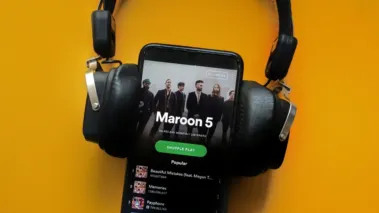
The Best Spotify Recommended Distributors
Choosing the right music distributor is a critical and subjective step for any musician learning how to put music on Spotify, to reach a wide audience and maximize revenue. With an array of options available, each offering a unique set of features and pricing models, it's essential to research and find a distributor that aligns with your specific needs and goals. Your choice will impact not only how broadly your music is distributed but also how quickly you're paid and what portion of your earnings you keep. We've done extensive research on many of these distributors, with articles on our finance section. But the three most artists usually wind up using are:
CD Baby
CD Baby is a veteran in the music aggregation game, known for helping unsigned artists carve out their own path. The company has a strong focus on both physical and digital distribution, making it a versatile choice for artists who want a one-stop shop. CD Baby charges an upfront fee per album or single released, and they take a 9% cut of your streaming and download revenues. The flip side? They offer a wealth of services that extend beyond digital platforms. You can even get CDs and Vinyl made and distributed. So, if you're an artist with an entrepreneurial mindset, looking to explore different revenue streams, CD Baby has you covered. They don't have an annual fee; you just pay once to get your music out there. They offer two main packages: Standard and Pro. The Pro package includes worldwide royalty collection, making it a compelling option for artists with global appeal. If you want to deep dive into everything CD Baby has to offer and whether it's the right choice for you, check out the full article below.
Read our full review of CD Baby here
DistroKid
DistroKid pitches itself as the budget-friendly, prolific artist's dream. For a $20 annual fee, you can upload an unlimited number of songs. Sounds awesome, right? But here's the kicker: that's not the full cost. Want to monetize your YouTube videos? Extra charge. Want to be on Shazam? Another fee. Any new platform in the future? Yup, that'll cost you too. Despite this, DistroKid has a solid range of features, like royalty splitting among collaborators and automatic payment schemes. Plus, you get to keep 100% of your earnings from streams and downloads. If you've got a large catalog or plan to release frequently, DistroKid's model can be cost-effective in the long run. But remember, to truly benefit from their unlimited uploads, you'll need to be consistently prolific and strategic about your music releases. Interested in learning more? Head to the article below for an in-depth comparison.
Read our full review of DistroKid here
TuneCore
TuneCore offers music distribution to over 150 platforms worldwide, including emerging platforms at no extra cost. It has a 24-hour turnaround promise, usually fulfilled in about two days. The service includes free distribution to audio recognition apps like Shazam and Gracenote. TuneCore's pricing ranges from a $14.99/year Rising Artist plan to a $49/year Professional plan aimed at managing multiple acts. The platform offers publishing services to collect performance, mechanical, and other royalties for a one-time fee of $75. Unlike DistroKid, TuneCore has quicker payment processing for royalties, generally within 30 days. It also caps withdrawal fees at 25 cents, with the option for weekly withdrawals.
For those with specific needs and goals in music distribution, considering factors like range of platforms, speed, and cost is crucial. TuneCore excels in most of these aspects, making it a strong contender for your choice of distributor.
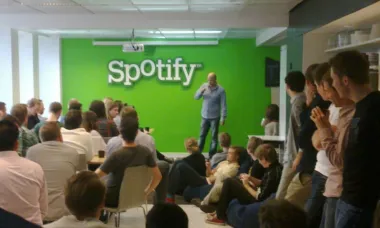
Claiming a Spotify Artist Page
The Spotify Artist Page is an overlooked yet very important Spotify feature. Once you've learned how to put music on Spotify, this is the next step you should look into. It's your music's home on the platform, a place where fans can discover your discography, playlists, and upcoming shows. More than a digital billboard, Spotify for Artists gives you critical tools for audience analytics, playlist management, and even direct fan engagement. A verified blue tick next to your name adds credibility, helping you stand out in a crowded marketplace. Claiming your Spotify Artist Page is the first step in leveraging these powerful features to build and enhance your music career. But before you can claim your Artist Page, your music has to be available on Spotify. So make sure you've reviewed the information above before moving on.
A Step-by-Step Guide for Claiming Your Artist Page
If Your Music is Live on Spotify:
- Navigate to the Spotify for Artists Website: Head to artists.spotify.com and click on ‘Get Access’.
- Select Role: Choose between ‘Artist or Manager’ and proceed by clicking ‘Continue’.
- Find Your Artist Profile: Search for your artist name or directly paste your Spotify Artist Link into the designated search box.
- Verify: Follow the ensuing instructions to complete the verification process.
Your Spotify Artist Link can be found by navigating to your profile on Spotify, clicking on the three dots under your artist name, and choosing 'Copy Artist Link' under the 'Share' option.
If Your Music Isn't Live Yet:
- Get Your Spotify URI: This unique identifier can be requested once your first release has been accepted by Spotify.
- Follow the Same Steps as Above: With your Spotify URI in hand, the process to claim your page remains the same.
Pro Tip: Timing Matters
It’s beneficial to claim your Spotify for Artists account ahead of your first release. Doing so allows you to pitch your music for Spotify's official playlists, enhancing your visibility right from the get-go.
Customization and Analysis
Once you've claimed your Artist Page, you can customize it by going to the PROFILE tab on your Spotify for Artists dashboard. Here, you can upload avatar and header images, add press shots to your image gallery, edit your artist bio, insert social media links, announce upcoming shows, and even add a fundraising pick.
Additionally, the platform enables you to track various metrics like total listeners and streams, listener demographics, and playlist features. This information is invaluable as it allows you to tailor your marketing strategies for maximum effectiveness.
Claiming your Spotify Artist Page is not just a procedural step; it's your gateway to a trove of tools and insights designed to elevate your music career. From verification badges to customizable profiles and analytics, the benefits are manifold. Therefore, if you’re an artist looking to make an impact, start by claiming your Spotify Artist Page.
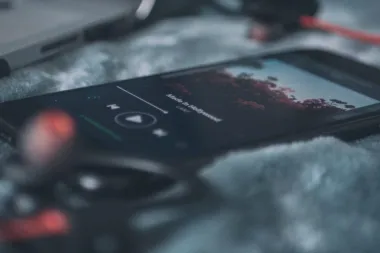
Submit Music to Spotify Playlists Directly
Now that you've figured out how to put music on Spotify and claimed your Artist Page, you have the power to directly submit your music for playlist consideration. Being featured on Spotify playlists can significantly elevate your reach, putting your tracks in the ears of potential new fans and even next to chart-topping artists. The Spotify for Artists platform simplifies this process, offering a direct channel to submit your songs for playlist inclusion. This is a game-changing opportunity you won't want to miss as you strategize to build your musical influence.
Prerequisites for Playlist Submission
Before you even think about playlists, make sure you're registered with Spotify for Artists. As mentioned earlier, this is a non-negotiable first step. Also, note that only unreleased music can be pitched for official Spotify playlists.
How to Submit Music for Official Spotify Playlists
- Login to Spotify for Artists: Use a desktop for this, as the feature isn't available on mobile.
- Navigate to the 'Music' Tab: Once logged in, click on 'Music' and then 'Upcoming'.
- Select Your Track: Pick the specific track you wish to pitch from your upcoming releases.
- Complete the Form: Provide as much information as possible about your track, like its genre, mood, and any other data that might make your music stand out.
Additional Considerations
- Pitching Time: Aim to submit your tracks at least a week before the planned release date. The earlier, the better.
- Track Limitations: Spotify allows only one track to be pitched at a time per release, and only tracks where you are the lead artist can be submitted.
- Be Precise: When filling out the submission form, the more specific you are, the better. Spotify's curators use this information to find the best fit for their playlists.

Spotify Revenue Per Stream
The big question after learning how to put music on Spotify and claiming your Artist Page is likely concerning royalties. After all, not many of us choose to do this for free. On average, Spotify pays you around $0.003 to $0.005 for each stream. You'll pocket about 70% of that, and the rest goes to other folks who have rights to the track—like your label, if you have one, or the songwriter. Knowing this helps you get a clearer picture of what you can earn from Spotify.
How Does Spotify Calculate Payments?
Spotify uses a "pro-rata" model to figure out payments, and it's based on four things:
- Spotify's total earnings from streaming.
- The payout rate agreed upon globally.
- Total number of streams on Spotify.
- Your song's streams.
There are different "buckets" for each type of subscription and country, which means not all streams pay the same.
What Influences Your Earnings?
- Your Distributor: Remember when we talked about using a distributor to get your music on platforms like Spotify? Well, your agreement with them directly affects your earnings. Some take a bigger slice of your pie than others.
- Listeners’ Country: Where your audience is matters. Streams from the U.S. pay more than streams from, say, Portugal.
- Account Types: Free and Premium accounts exist. You'll make more from Premium listeners since they're already paying Spotify.
Two Types of Royalties
When you get paid, it usually comes in two types: mechanical and performance royalties. Mechanical royalties are paid when your song is actually streamed. Performance royalties are paid when your song is played in a public setting, like a bar or on the radio.
Maximize Your Earnings
The more platforms your music is on, the more you make. Period. But Spotify has its own ecosystem of playlists. Get your music featured in playlists—either Spotify's own or those made by users—to up your chances of getting more streams and, by extension, more earnings.
In short, understanding Spotify's pay-per-stream model and maximizing your presence can significantly affect your streaming income. It's a crucial part of being an indie artist in today's digital landscape.
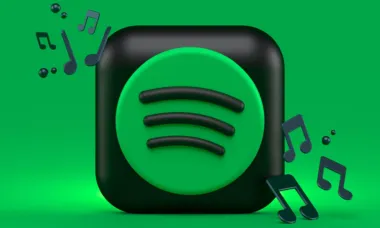
Final Advice
Let's be honest, while the 21st century digital age has opened many doors for independent musicians, accomplishing your goals can be a grind. Success isn't just about making great music—you need to understand the platforms that your audience listens to. And learning how to put music on Spotify is a critical step for every original artist. Using a distributor, pitching to playlists, and managing your artist page, will help you optimize how your music is consumed and monetized. As you make your mark, remember: the most streamed artists aren't always the ones with the biggest labels or marketing budgets, but the ones who know how to use the digital stage to their advantage. So go on, claim your spot. The world is waiting to hear what you've got!

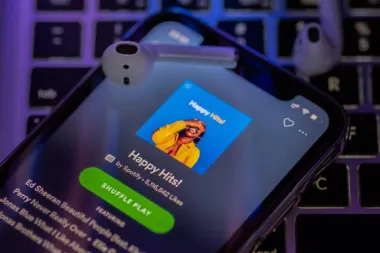
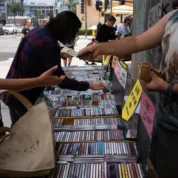


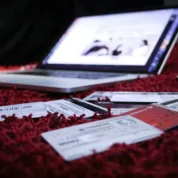

Leave a Reply!